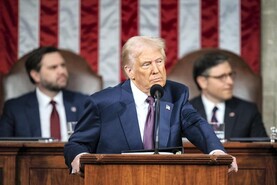The level of direct payment subsidies available to farmers will have the largest effect on farm incomes in a post-Brexit scenario, according to researchers at Wageningen University in the Netherlands. In a report commissioned by the NFU in England, potential scenarios relating to trading relationships and the level of direct payments available to farmers by the UK government post-Brexit were examined.
The level of direct payment subsidies available to farmers will have the largest effect on farm incomes in a post-Brexit scenario, according to researchers at Wageningen University in the Netherlands.
In a report commissioned by the NFU in England, potential scenarios relating to trading relationships and the level of direct payments available to farmers by the UK government post-Brexit were examined.
The first trade scenario is a Free Trade Agreement (FTA) between the UK and the EU allowing no tariffs to be applied on agricultural products in a bilateral deal. Another potential policy is the UK having a World Trade Organisation (WTO) default position in which most favoured nation rules apply and the third scenario is Trade Liberalisation (TL) in which the UK reduces its tariff rates by 50% across the board.
The scenarios for the levels of direct subsidies paid to farmers by the UK government post-Brexit are examined at current EU direct payments rates, at 50% of current rates and finally with complete removal of direct payments.
Findings
The study states that farmgate prices and farm incomes across all sectors in UK agriculture would decrease in a post-Brexit scenario if the UK government pursues a TL scenario. Incomes in field crop farms are the only sector that remain positive under a TL scenario, and this is only when direct payments are maintained at 100%.
The reduction in import tariffs under a TL scenario would particularly affect meat and dairy sectors and reduce farmgate prices and subsequently production in the UK. Across sectors the impact under TL is exacerbated when a 50% reduction or a complete removal of direct payments is applied.
Changes in income compared with the 2012/2013 average income per farm type, per scenario (in €1,000).

Source: NFU/LEI report
Under the FTA and WTO scenarios, UK farmgate prices generally rise, mainly due to trade facilitation costs increasing the cost of imports and therefore stimulating demand for domestic products.
Price increases under the FTA and WTO scenarios cause incomes to vary across sectors from remaining unchanged to increasing to over €10,000 per farm in field crops, dairy and mixed farms. Price increases are offset by reductions in subsidies at 50% reductions and more than offset at full removal of direct payments.
Regions
Findings are similar as across the sectors on a UK-wide basis. The changes in farmgate prices under WTO and FTA have a positive effect on farm incomes, which is then offset if reductions to direct payments are applied at both rates. TL scenarios across all direct payment rates result in farm income drops except in east England, where 100% of direct payments are maintained.
Changes in income compared with the 2012/2013 average income per region, per scenario (in €1,000).

Source: NFU/LEI report
In Northern Ireland, maintaining 100% direct payments under the FTA and WTO trading arrangements are the only scenarios that result in increases in average farm incomes at around €4,000 and €7,500 on 2012/2013 income levels respectively. Incomes drop by around €7,000 under TL with 100% direct payments and by close to €30,000 under TL with no direct farm subsidies.
The report points out that trading arrangements similar to the TL scenario examined are favoured by many Eurosceptics in Britain and also that the UK government historically has not been an advocate of direct payments to farmers.
The NFU is presenting the findings of the report at 28 meetings across England over the next fortnight. After this the NFU council will meet in mid-April to discuss wither the organisation takes a position ahead of the referendum on behalf of the UK agriculture industry.
Read more
British farmgate prices as worrying as Brexit
Sterling falls to £0.80 against the euro for first time since November 2014





SHARING OPTIONS: